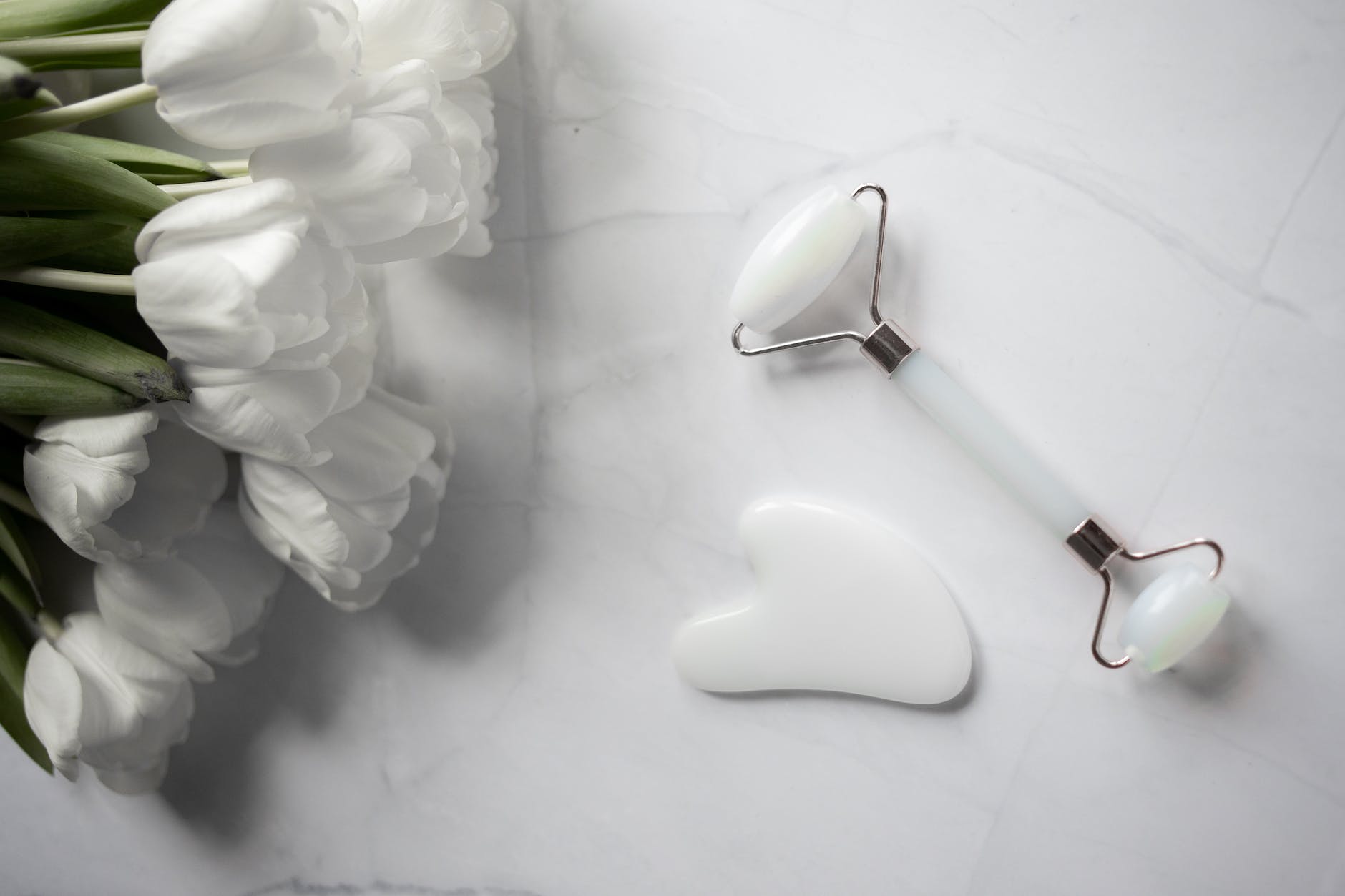
Use a Derma Roller for Hair Regrowth
Derma rolling stimulates hair growth by promoting collagen production. It also increases blood flow and allows topical solutions such as minoxidil to penetrate better.
Before using the derma roller:
- Clean your scalp with a gentle shampoo that does not contain sulfates or parabens.
- Make sure that your hair is knot-free.
- Divide your hair into sections and systematically roll over them with the roller.
1: Preparing Your Scalp
Before using a derma roller for hair loss treatment, you first need to make sure the scalp and roller are clean. You can start with a little in-shower scalp massage and lather, rinse and repeat to remove any excess buildup of dead skin cells on your scalp’s surface. To disinfect your derma roller, spritz some rubbing alcohol onto the needle-covered barrel of the tool.
A derma roller for hair loss is a small tool with a handle attached to a drum-shaped barrel with super-thin needles on its surface. When you roll the derma roller over your scalp, these micro-punctures penetrate and stimulate the skin, activating the hair follicles to grow stronger.
As a result, it also improves blood circulation to the scalp and encourages cell regeneration. The derma roller is a safe and effective treatment to help you get thicker, fuller hair.
It would help to use the derma roller for hair regrowth every few weeks for the best results. It may take 3-6 months to notice any results, but the treatment is relatively painless and safe if done correctly. Avoid using the derma roller too often, as it can cause damage and scarring if used incorrectly. Rather, start with a session once a week and see how your scalp responds, then increase it to twice a week as needed.
2: Using the Derma Roller
The derma roller is a small tool with a cylinder-like structure covered in needles. It was originally designed to help heal acne scars in dermatology but has also been found to promote hair growth and thickening. The derma roller works by causing tiny wounds in the skin, which prompts the body to produce collagen to support the hair follicles and improve blood flow.
Before using the derma roller, ensure your hair is clean and detangled. This will ensure the derma roller can penetrate your scalp without damaging it. Also, be sure to sanitize the device before and after each use. It would help to soak it in 70% isopropyl alcohol before using it. It would help to replace the derma roller every two months, as the needles will get dull over time.
Several different derma roller sizes are available, but for hair regrowth purposes, you should aim for one with needles ranging from 0.5 mm to 1.5 mm in length. Using longer needles is only safe for professionals, as they may cause injury and scarring.
In addition to the derma roller, you can use topical oils and hair products to stimulate your scalp and promote hair growth. Peppermint oil is a great option because it soothes an itchy scalp and has antibacterial properties to prevent bacteria from growing on the scalp. Lavender oil is another excellent option because it has antifungal and soothing properties that can help treat scalp conditions like dandruff, eczema, and lice.
3: After the Derma Roller Treatment
The micro-needling process induced by the derma roller activates hair cells and helps them regenerate. It also induces collagen production, strengthening the hair follicle and promoting healthy growth. Ideally, derma roller treatments should be done every 3-4 weeks.
You will experience a little redness for a few days after your derma rolling treatment, and the skin may start to peel. This is normal, and it will pass as the new hairs grow.
Depending on your tolerance level and sensitivity, you can roll the area up to four times per session. Always lift the derma roller after each pass to prevent “tram track” scarring. If you feel discomfort, you can always reduce the number of rolls or use a smaller needle size.
After each derma roller session, massage your scalp with quality hair oil. This ensures that at least 80% of the oil is absorbed. Studies have found that derma rolling enhances the absorption of topical solutions like hair oils and minoxidil.
Buying a high-quality stainless steel derma roller is advisable, as it will last longer, and the needles will not blunt as easily. It is also important to disinfect your derma roller before and after each use, using 70% isopropyl alcohol. Also, do not touch the needled area with dirty fingers or an unsterile surface, as this can cause infection.
4: Post-Derma Roller Treatment
Derma rolling is an effective method for reversing hair loss and promoting thicker, stronger strands. However, the treatment requires patience and consistency. It’s important to remember that there may be possible side effects.
For example, you may experience an allergic reaction to the numbing cream or the needles themselves. Similarly, you may develop scar tissue, which prevents hair growth. This is why it’s important to always do a patch test before beginning the treatment.
Additionally, if you suffer from androgenetic alopecia, the long needles on a derma roller can cause damage to the bulb of the hair. Using a derma roller with needles longer than 0.5 mm is not recommended. You should also avoid picking at or scratching the irritated areas after treatment.
If you need clarification on whether a derma roller for hair regrowth is right, consult a dermatologist or an esthetician. A professional can recommend the best needle length for your skin type, and they can help you avoid complications during and after the treatment.
In addition to a derma roller, you need to invest in some good hair products. A nutrient-rich serum or solution will boost your results and maximize the benefits of the micro-needling process. For instance, peppermint oil has cooling properties that soothe an itchy scalp. It also reduces dandruff and moisturizes the strands.






